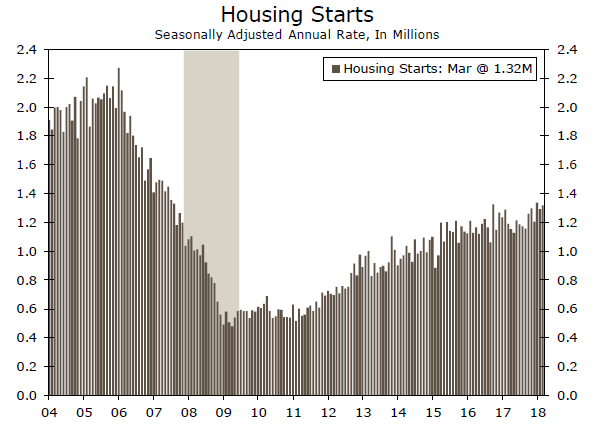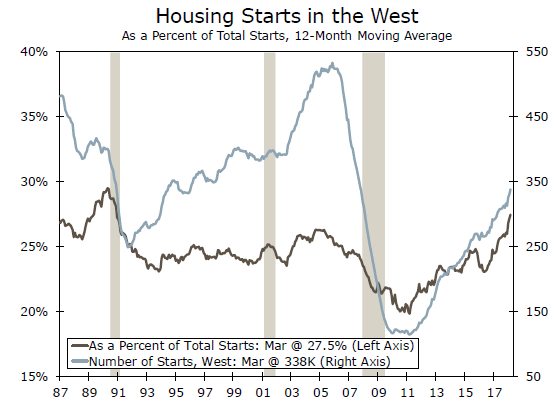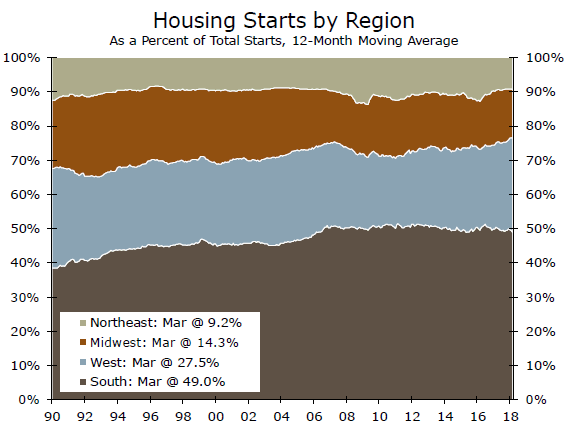Housing starts rose 1.9 percent in March to a 1.32-million unit pace, while permits increased 2.5 percent. Revisions to previously published data show that starts and permits were stronger during the first quarter.
Revisions Should Put Some Doubts to Rest
Housing starts rose 1.9 percent in March, with all of the gain coming in the volatile multifamily category. Multifamily starts jumped 14.4 percent during the month, while single-family starts fell 3.7 percent. Despite the dip in single-family starts, the data for the first three months of the year are unambiguously positive and indicate that new home construction has more momentum than previous reports had indicated. Data for February were revised up significantly and now show starts falling less than half as much as the preliminary figures indicated. Housing permits were also revised up significantly.
We have repeatedly noted that preliminary data for the early part of the year are notoriously volatile and that volatility can be heightened by swings in the weather. Early data from this seasonally slow time of the year are often incomplete, which appears to have been the case this year. The new data show homebuilding is off to a strong start, with overall starts through the first three months of this year running 8.0 percent ahead of the same period one year ago. Single-family starts through March are 7.0 percent higher than they were in Q1-2017, while multifamily starts are up 10.2 percent.
The improved data appear to be mostly due to stronger growth in the West, where starts through the first three months of the year are up a whopping 34.2 percent from last year and single-family starts are up 26.5 percent. The West is where economic growth has been the strongest and homebuilding has generally lagged behind population and employment growth. With home prices soaring, governments have become more proactive at trying to pave the way for more residential development, even in California. Home buyers out West are also seeking out more affordable markets in California’s Inland Empire, the Central Valley, and in Nevada, Arizona and Utah.
The harsh winter weather in the East and Midwest is still evident in the housing data. Overall starts in the Midwest through March are down 6.3 percent from one year ago and single-family starts are down 3.0 percent. The Northeast has fared somewhat better. Overall starts through the first three months of the year are up 9.0 percent, but single-family are down 4.8 percent. Moreover, overall permits through March in the Northeast are down 1.5 percent and single-family permits have fallen 3.6 percent. We would expect these data to improve once things warm up in May and June.
Housing starts fell 0.6 percent in the South during March, pulled down by a huge 9.8 percent drop in single-family starts. Through the first three months of 2018, overall starts in the South are running 0.5 percent below their yearago pace, while single-family starts are running 2.7 percent higher. The South and the West have accounted for a near-record 76.5 percent of housing starts over the past year. The unusually high concentration of housing starts in these two regions may be heightening concerns about shortages of lots, labor and building materials.

















